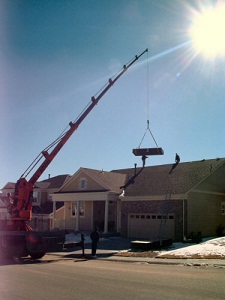Solar Thermal Alliance outlines opportunities and challenges
 Solar power is making big waves in the energy industry as of late, but when most people think of solar power, they think of photovoltaic (PV) technology. Solar thermal technology has been largely ignored—especially in Colorado, which is unfortunate because climate conditions exponentially favor this specific solar technology.
Solar power is making big waves in the energy industry as of late, but when most people think of solar power, they think of photovoltaic (PV) technology. Solar thermal technology has been largely ignored—especially in Colorado, which is unfortunate because climate conditions exponentially favor this specific solar technology.
“Colorado is the bullseye for solar thermal technology in the U.S.,” said Laurent Meillon, president of Capitol Solar Energy, LLC, and one of the founding members of Solar Thermal Alliance of Colorado (STAC). “Yet the public remains largely uninformed and unaware of the benefits of solar thermal technology, and it was largely ignored in the Renewable Energy Standard Amendment 37.”
Meillon is adamant about the opportunities solar thermal technology presents.
At the first stakeholder’s meeting for STAC, he spoke to the efficiency and economic opportunities of solar thermal technology.
Colorado, he said, is positioned perfectly for solar thermal technology due to strong solar radiation, sunny days, warm day-time temperatures, cold nights, cold ground water and our need for space heating. He also stated that solar thermal panels capture 70 percent of the sun’s energy as compared to PV panels which only capture 17 percent. In comparison, he said, coal is only 30 percent efficient.
“In residences and businesses, the majority of our energy expense is related to heating functions. Three-quarters of heating needs could be met by solar thermal technology,” said Meillon. “Between hot water and combination hot water and space heating, domestic, commercial and industrial heating needs could be alleviated by the implementation of solar thermal technology. Solar thermal heating could reduce peak demand and improve the grid.”
In addition to displacing fossil fuels such as natural gas, propane, and electricity, solar thermal technology would also provide a significant local labor force with well-paid jobs, materials that are mainly manufactured in the U.S., installation expertise, and the room for start-ups and small businesses to grow.
Compared to other solar technology, solar thermal is also relatively affordable to install and maintain and is even adaptable to partial shade conditions.
Of course, wherever there are opportunities, there are also challenges. The challenges of solar thermal technology were laid out by Meillon and other stakeholders at the STAC meeting.
Story continues here.
Pictured: A boom truck lifts solar thermal panels onto roof, courtesy of Capitol Solar Energy.



